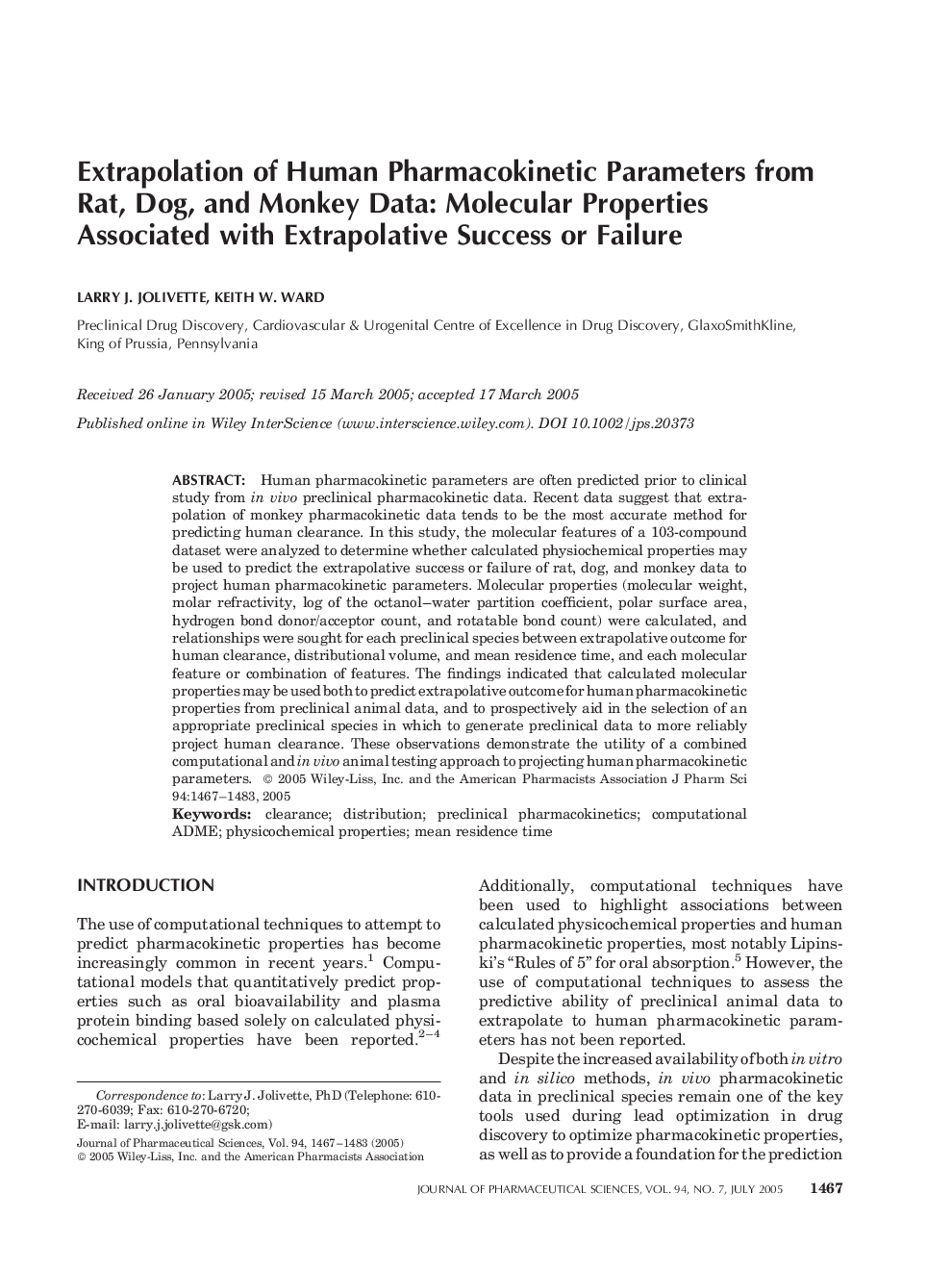| Article ID | Journal | Published Year | Pages | File Type |
|---|---|---|---|---|
| 8994833 | Journal of Pharmaceutical Sciences | 2005 | 17 Pages |
Abstract
Human pharmacokinetic parameters are often predicted prior to clinical study from in vivo preclinical pharmacokinetic data. Recent data suggest that extrapolation of monkey pharmacokinetic data tends to be the most accurate method for predicting human clearance. In this study, the molecular features of a 103-compound dataset were analyzed to determine whether calculated physiochemical properties may be used to predict the extrapolative success or failure of rat, dog, and monkey data to project human pharmacokinetic parameters. Molecular properties (molecular weight, molar refractivity, log of the octanol-water partition coefficient, polar surface area, hydrogen bond donor/acceptor count, and rotatable bond count) were calculated, and relationships were sought for each preclinical species between extrapolative outcome for human clearance, distributional volume, and mean residence time, and each molecular feature or combination of features. The findings indicated that calculated molecular properties may be used both to predict extrapolative outcome for human pharmacokinetic properties from preclinical animal data, and to prospectively aid in the selection of an appropriate preclinical species in which to generate preclinical data to more reliably project human clearance. These observations demonstrate the utility of a combined computational and in vivo animal testing approach to projecting human pharmacokinetic parameters. © 2005 Wiley-Liss, Inc. and the American Pharmacists Association.
Keywords
Related Topics
Health Sciences
Pharmacology, Toxicology and Pharmaceutical Science
Drug Discovery
Authors
Larry J. Jolivette, Keith W. Ward,
